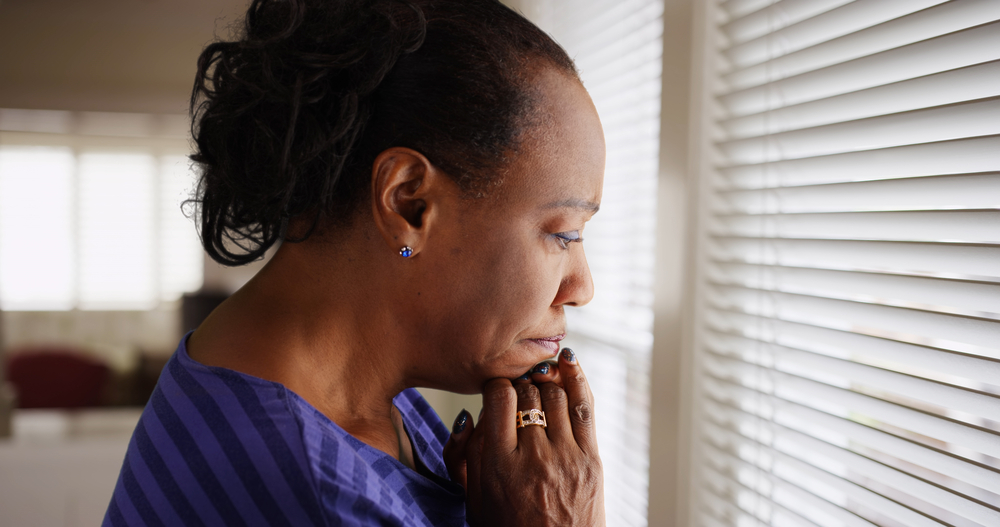
RocketclipsInc/Shutterstock
.
Editorial writers rarely do their own reporting. Most of the time they comment on what reporters for their publications have found or what they’ve read elsewhere.
But when editorial writers have done their own reporting, they’ve produced some of the nation’s best journalism about child welfare. The year 2018 ended with an outstanding example: an eight-part series of editorials in The New York Times.
The primary theme of the series is the erosion of the rights of children as a result of fetal personhood laws — or related government interventions even when there is no law. The examples cited include cases in which pregnant women have been criminally prosecuted for falling down stairs or having a miscarriage and other examples that sound like something out of “The Handmaid’s Tale.”
How child welfare system makes things worse

Richard Wexler
But two of the eight parts zero in on how the child welfare system has made everything worse, for the mothers and their children. Indeed, those two parts make the case that hysteria over so-called “crack babies” in the 1980s and 1990s — a hysteria driven as much by the political left as by the right — and the resulting demonization of poor black mothers gave enormous fuel to the fetal rights movement. As one of the editorials explains:
“The idea of a mentally impaired ‘crack baby’ resonated with long-held racist views about black Americans. It captured the imaginations of reporters, politicians, school officials and others who were historically conditioned to believe just about anything about the African-American poor.
“Americans were told on the nightly news that crack exposure in the womb destroyed the unique brain functions that distinguish human beings from animals — an observation that no one had ever connected to the chemically identical powdered form of the drug that affluent whites were shoveling up their noses.”
The Times also notes something we’ve pointed out for years — the bias that permeates “scholarship” on child welfare:
“The appetite for stories of black depravity extended to medical journals, which favored shoddy studies showing that cocaine harmed babies over better research refuting that claim.”
The Times doesn’t spare itself, citing its own work, in news stories and on the editorial page, promoting these myths. The editorial notes that, to her great credit, the author of one of the Times stories, Susan Chira, “said recently that she would ‘unwrite’ the story if she could and has since come to understand that the damage theories put forward by medical and school professionals three decades ago were ‘far too alarmist and totally unsubstantiated.’”
‘Crack baby’ stereotypes lasted
By now that part of the story, how the media got crack cocaine all wrong is old news. But the Times editorial adds a new element — showing how, years after the myths were debunked, the damage remains, in our laws, in our policies and in media stereotypes:
“Hospitals that served indigent women began drug testing newborns and reporting the findings to authorities who placed children in foster care or held them in hospitals for months — sometimes based on inaccurate drug tests. …
“Today, that war on the womb targets even legal drugs like antidepressants that also pose no danger to the unborn. All women who use such drugs are vulnerable. But — as during the crack epidemic — poor women are the most vulnerable. …”
And indeed, though the editorial doesn’t mention it, the punitive approach to pregnant women who use drugs — of almost any kind and in almost any way — has been written into federal law, specifically some extremely damaging provisions of the Child Abuse Prevention and Treatment Act.
Yet, as the Times points out in another editorial in the series, this approach has failed. And with each new “Worst Drug Plague Ever” we keep doing the same thing, and keep right on failing:
“Locking up mothers as they engage in this struggle, separating them from their children and bombarding them with vitriol may satisfy an impulse to punish, but such measures have not managed to stop or even slow the current crisis.”
“We love to hate these women,” says Barry Lester, a professor of psychiatry and pediatrics at Brown University who specializes in opioid addiction. “But our hatred is not accomplishing anything.”
And it’s not just policymakers. Many journalists keep repeating their mistakes as well.
Journalists still doing bad work on this
The same horror stories passed off as the norm and the same ugly stereotypes were found in much of the coverage of methamphetamine when that was officially the Worst Drug Plague Ever. I have not read anywhere that Kate Zernike would like to “unwrite” her atrocious 2005 New York Times story about so-called meth orphans. Yet that story was worse than Chira’s because, by 2005, we already knew that the stories about crack babies were wrong. Zernike simply chose to ignore those lessons.
Now opioid abuse is officially the Worst Drug Plague Ever. So we get Duff Wilson and John Shiffman of Reuters dredging up horror stories and suggesting that CAPTA’s get tough approach isn’t tough enough. I look forward to the day they say they’d like to “unwrite” their stories. Same with Washington Post reporters Perry Stein and Lindsey Bever.
(On the other hand, this is a good time to remember how all these great big news organizations were outreported by one reporter for a small newspaper in Montana and a bunch of journalism students, who got the story right.)
Meanwhile, the Times editorial board had to do the debunking — which they proceeded to do in part 5 of their series, which tells the story of our failed response to opioids through the case of a mother who deeply loves her children but whose efforts to kick her habit have been thwarted at every turn by both the child welfare and criminal justice systems. They write:
“Increasingly … doctors are concluding that the best treatment for babies born with neonatal abstinence syndrome, the clinical term for postnatal opioid withdrawal, is not so different than the best treatment for all newborns: keeping them with their mothers, encouraging them to bond with one another and treating complications as needed.”
The journalists who still don’t get it might be able to learn from, of all places the Tennessee state Legislature. As the Times editorial explains,
“In Tennessee, a fetal assault law passed in 2014 and meant to nudge women into treatment by threatening them with jail time was left to sunset after a two-year trial run, in part because multiple accounts emerged of pregnant women fleeing the state, giving birth at home — or, in at least one case, on the side of a road — all to avoid the public hospital.”
This, too is nothing new. A similar effort in Utah in the late 1990s also caused mothers to flee from prenatal care.
Back in Part 4, the Times summed it up this way:
“The story of the ‘crack baby’ shows how weak science, poorly informed crusaders and racist attitudes can work together to shape public policy. … the science around pregnancy needs to be approached with humility and humanity. Because when that’s lost, even in a quest for social good, the results can be irreversible.”
A little more humility and humanity in the journalism about child welfare and drug abuse wouldn’t hurt either.
Richard Wexler is executive director of the National Coalition for Child Protection Reform.


























